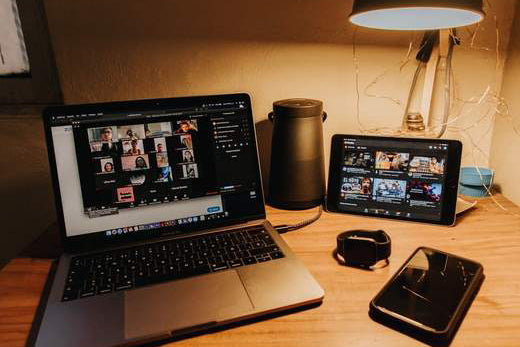Have you been having less in-person interactions but been way more mentally drained? If yes, it’s not just you--it’s all of us. Stanford recently published a study on the four reasons why video conferencing causes fatigue and ways to combat it. Great for us because the solutions are a pretty quick fix, it’s just about knowing what they are.
Reason 1: Lots of close-up eye contact is quite intense
When you’re in a video chat, there is that impression that a lot of eyeballs are on you. In a normal meeting, non-speakers are usually looking directly at the speaker or looking elsewhere so it’s easy to do your own thing and pay attention however you feel comfortable. Video chats give the false impression of people staring directly at you even if you’re not speaking. On top of that, monitors enlarge faces, which can especially be daunting in 1:1 conversations. Seeing a face that enlarged and up close “...simulates a personal space that you normally experience when you’re with somebody intimately” states Bailenson, a Stanford professor.
Solution: Try to reduce the size of the video chat window and sit a tad further from the monitor to increase personal space from yourself and the screen.

Reason 2: You’re not used to staring at yourself constantly
In a video chat, your self-image is alongside the person you're speaking with. We’re constantly staring at ourselves and that actually causes us to be more critical of ourselves. We’re staring at our own image as we receive feedback, make decisions, have collaborative conversations, and chat with our managers. That’s tiring, and there’s plenty of research stating the negative consequences that spur from staring at ourselves in the mirror too much.
Solution: Try hiding or minimizing your self-view so that there’s less focus on yourself and more focus on the person you’re speaking with.

Reason 3: You’re moving less
This one is less of a surprise, but it’s an inevitable fact: we’re moving less. Bailsenson states that there is growing research on how people perform better cognitively when they’re moving. In a work from home environment, we do not have to walk to different conference rooms or relocate ourselves.
Solution: When able, try pacing around during virtual meetings or when you have conversations that are over the phone.

Reason 4: There’s more subconscious thinking to be done on video chats
Nonverbal cues are telling ways to better understand the person we’re speaking to, and are a natural part of our conversations. However, all of that is taken away when we’re video chatting. Gesture codes are dramatically different and we often have to exaggerate our motions--more head nodding, putting your thumb up to show agreement, etc. These subtle movements actually “add cognitive load as you’re using mental calories in order to communicate.”
Solution: Try to give yourself a break by turning off your camera when you can, and turn your body away from the screen.

Working from home has been one of our biggest adjustments during the pandemic.
Rise to the occasion by keeping these four solutions in mind to mitigate the effects of fatigue and mental drainage.
Jenny Yae: RISE Wellness Contributor
























